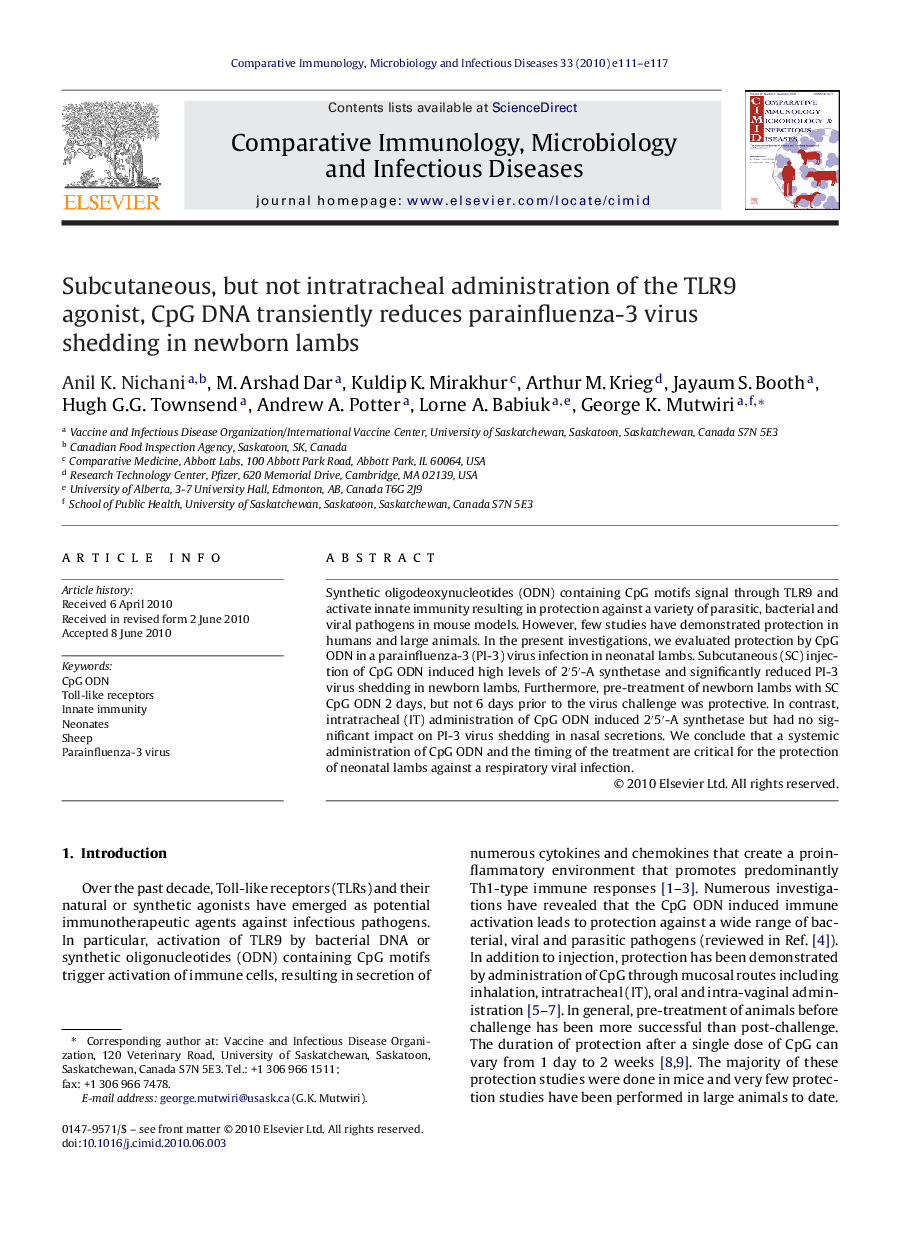| Article ID | Journal | Published Year | Pages | File Type |
|---|---|---|---|---|
| 2428549 | Comparative Immunology, Microbiology and Infectious Diseases | 2010 | 7 Pages |
Synthetic oligodeoxynucleotides (ODN) containing CpG motifs signal through TLR9 and activate innate immunity resulting in protection against a variety of parasitic, bacterial and viral pathogens in mouse models. However, few studies have demonstrated protection in humans and large animals. In the present investigations, we evaluated protection by CpG ODN in a parainfluenza-3 (PI-3) virus infection in neonatal lambs. Subcutaneous (SC) injection of CpG ODN induced high levels of 2′5′-A synthetase and significantly reduced PI-3 virus shedding in newborn lambs. Furthermore, pre-treatment of newborn lambs with SC CpG ODN 2 days, but not 6 days prior to the virus challenge was protective. In contrast, intratracheal (IT) administration of CpG ODN induced 2′5′-A synthetase but had no significant impact on PI-3 virus shedding in nasal secretions. We conclude that a systemic administration of CpG ODN and the timing of the treatment are critical for the protection of neonatal lambs against a respiratory viral infection.
